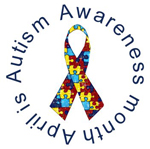Autism Awareness Month encourages education


April is Autism Awareness Month, and the Center for Disease Control and Prevention has released new numbers that show its prevalence in America.
A recent CDC report estimates that 1 in 88 children in the U.S. has autism.
The Autism Society defines autism as a complex developmental disability that typically appears during the first three years of life and affects a person’s ability to communicate and interact with others.
Autism is also referred to as a ‘spectrum disorder,’ and affects people differently. Asperger’s syndrome is usually listed on the autism spectrum.
Mansur Choudry, a specialist at SpecialCARE, a facility that offers services to children both with and without special needs, said as of now the cause and cure of autism are still in question.
“Presently, we can’t say 100 percent what is the cause of autism,” Choudry said. “Presently we also do not know what the cure is.”
Dawn Ladiski, professor of child development, agrees.
“As much as [researchers] know about autism, they still don’t know that much,” she said. “It’s very complex.”
Ladiski said one way to tell if a child has autism is by observing his or her behavior around other people.
“A lot of it has to do with interactions with other children and people,” Ladiski said.
She also said some children may have sensory issues, such as being sensitive to touch.
“You might see a child who doesn’t want to be touched or hugged,” Ladiski said.
Choudry said there are many other indicators of autism in general that might be helpful in diagnosing a child.
“The general signs you see are not looking into the eyes,” Choudry said.
Choudry warned though that not all autistic children have the same signals.
“There are so many different signs,” Choudry said. “The problem is, no two children are the same. If there is a sign in one child, it might not be in the other child.”
Choudry stressed starting therapy early to help children with autism succeed,
“There’s a lot of denial about this thing with a lot of parents,” Choudry said. “But the earlier you start therapy, whichever [kind] you want to start, it helps the child be more functional.”
Choudry said different forms of therapy have emerged throughout the years claiming to help autistic individuals.
“They have all come and gone, but there will always be people who swear it helped their child,” Choudry said. “It might have, it might not have. I don’t know, ”
Ladinski said there has also been media speculation about the link between autism and immunizations.Ladinski said she spoke with her pediatrician about the link when it came time to vaccinate her children, and she was told the evidence for such a link is weak.
“There is a lot of information out in the media about how there is that link,” Ladiski said. “They actually do not have any research that ties that back in.”
Ladiski encouraged parents to be educated about immunizations, and to evaluate any information they hear about negative effects of immunizations.
“There is a lot of misinformation out there that makes people very apprehensive about giving immunizations.” Ladiski said.
Ladiski said if a parent is still worried about what effects immunizations may have, they can discuss with their pediatrician about their child’s immunization schedule.
“You can talk to your pediatrician about how many shots, or the dosage,” Ladiski said.
Choudry warned, however, that whatever treatments a person chooses only teaches the patient to cope and they are not permanent fixes.
“Autism never goes away,” Choudry said. “People will tell you they cure autism. They don’t. They help you manage it better.”
For more information about autism and a complete list of possible indicators, visit www.autism-society.org or contact your childs physician.
To contact Mary McAtee, email staffwriter2@occc.edu.